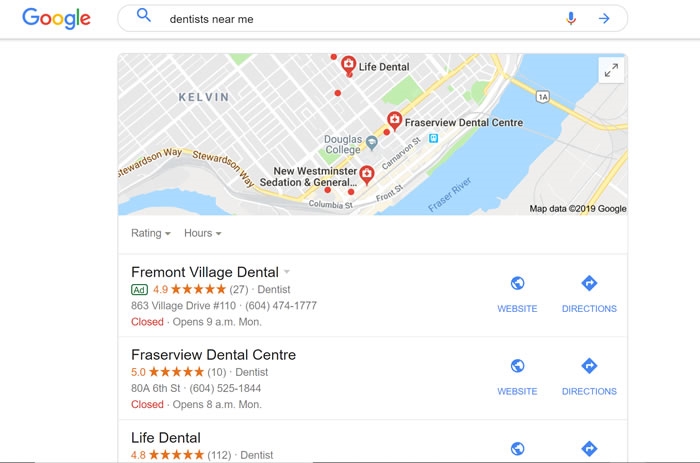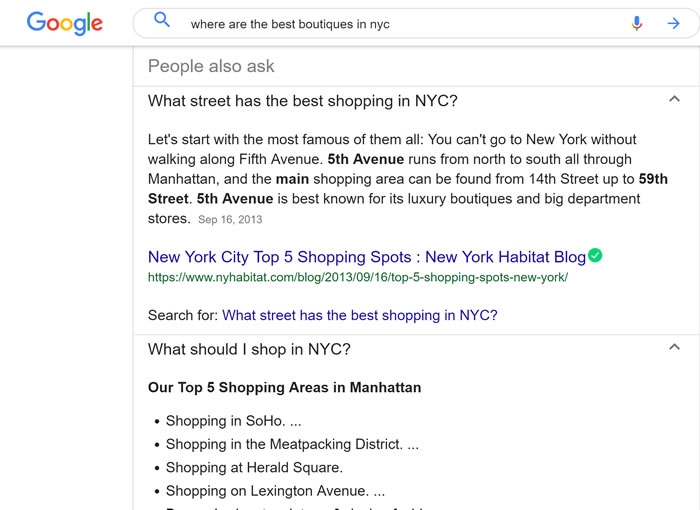— March 15, 2019

How to Create an Effective SEO Strategy for Your Business Website
Recently I talked about what voice search technology means for your business. It’s such an important topic that I decided to write a second part related to SEO this week.
From Google Assistant to Siri, people are speaking rather than typing to search online more than ever.
According to Location World, more than 40 percent of adults used spoken search on a daily basis in 2016. ComScore estimates that over 50 percent of searches will be voice-based by 2020.
It makes sense: it’s much easier to speak a question than it is to type it. And it allows you to multitask while driving, cooking or walking.
This is not a fad, or something you should ignore – if you want to get ahead and stay ahead of the competition, now’s the time to do it.
Here’s what to focus on:
It’s all about location, location, location
In a previous article, I covered the importance of using local keywords to attract visitors and customers. Using these local targeted keywords is a huge part of any SEO strategy for your website.
Mobile voice-related searches are three times more likely to be locally based. People are looking for what’s nearby right now, so the more specific you can get with your keywords and copy the more likely they are to find you.
Use your location with keywords as often as you can, and don’t forget to keep your Google My Business page and Yelp page updated with your current information – these results are served too, not just your web content.

Be more natural
What someone types into a search bar is going to be different from a spoken query. For example, if I want to find a hotel near the airport in Toronto, I’d type something like “hotels near airport Toronto” into the search bar.
However, if I’m speaking my search, it would be more like “what hotels are near the airport in Toronto?”
Google is looking for natural language, so you’re going to have to brainstorm the types of questions people might ask that include your target keywords.
Incorporate conversational, long-tail keyword phrases into your content as much as possible.
Some great ways to create natural content include:
- About and FAQ pages
- Blogs and articles
- Answering questions on your Google My Business Questions and Answers section
- Providing as much info as you can to Google My Business and Yelp, including hours of operation, products or services offered, parking, delivery or shipping options and so on.
Aim for featured snippets and People also ask
Both Google Home and Google Assistant read out featured snippets when answering queries, so you want to get to the top!
Featured snippets are selected search results that are found in a box on top of Google’s organic results.
Google wants to give users the best answer so it’s essential you answer questions clearly and update your website with fresh, engaging copy on a regular basis.
Research shows answers in the form of lists have done very well in featured snippets. The more conversational answers your site and online profiles contain, the better your chances of appearing in this coveted spot.
The same goes for “People also ask”. You might have seen this pop up when you type in or speak a question. Check out the example below – I asked, “where are the best boutiques in nyc?”
Below the top few results there is often a “People also ask” section. Each of those dropdown menus answers a related question using content from well-optimized websites or blogs.

Create copy for a 9th grade reading level
No matter what your business offers it’s never a good idea to write overly technical or jargon-filled copy. It doesn’t benefit the user, and it doesn’t benefit your SEO.
Research shows that content written at a 9th grade reading level – or below – appears more often as a voice result. You can use a tool such as the Flesch-Kincaid Grade Level to determine what grade your content is at and adjust accordingly.
It’s not about dumbing down your site – it’s about answering questions succinctly and clearly rather than filling your webpages with unnecessary language that will only confuse searchers and search engines.
Focus on adding these strategies to your marketing efforts to increase traffic, leads and sales as adoption of this exciting technology continues to grow. The more you focus on voice search optimization now the better results you’re going to get in the long run.
 Originally published here.
Originally published here.
Digital & Social Articles on Business 2 Community
(52)







